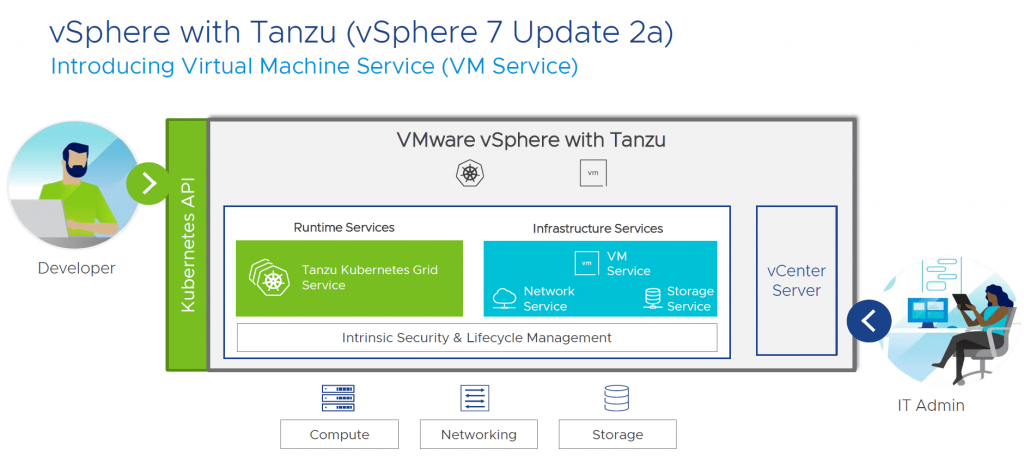Today we are excited to announce the immediate availability of the vSphere Virtual Machine Service (VM Service). Included in the vSphere 7 Update 2a release, the VM Service enables Kubernetes-native provisioning and management of virtual machines, for developers running modern apps on vSphere with Tanzu. The VM Service allows a developer (or any DevOps, platform operations, or Kubernetes user) to deploy and manage virtual machines using Kubernetes standard APIs, while simultaneously allowing the IT administrator to govern resource consumption and service availability.

This capability joins the Network Service and Storage Service that have been available since VMware originally released vSphere with Tanzu last year, collectively giving developers self-service access to the compute, network, and storage resources they need to run their applications, using a Kubernetes API surface. With the VM Service, vSphere with Tanzu further empowers organizations to modernize their applications and enhance the cloud-native experience for their developers.
Boost Operational Efficiency
Whether you’re an application developer, an IT admin, or any other Kubernetes user or admin, the VM Service will make your life easier. For Kubernetes developers and users, you can self-provision and customize VMs whenever you need them. No need to call the IT help desk or submit an IT service request. For administrators, you no longer have to service those individual requests or create customized VMs for Kubernetes users.
Enforce Guardrails
As an IT admin, you want to make sure those new VMs stay within the boundaries you determine, based on the available infrastructure and capacity, as well as organizational policy. Pre-configure several VM classes for developers to choose from, each with unique CPU and memory limits optimized for different types of applications (data intensive, compute intensive, etc.). Keep your developers happy and collaborate better.
Cloud-native Experience
Modern applications often use a combination of containers and VMs. For example, it’s not uncommon for a containerized app to utilize a database hosted within a separate VM. The VM Service will allow developers and other Kubernetes users to easily define the structure of these applications (using a YAML specification) in a self-service manner. And because the VM Service uses a standard Kubernetes consumption model, it will work the same way everywhere.
Open-source Commitment
As a leading contributor in the Kubernetes open-source community, VMware continues to demonstrate its commitment to open-source with this announcement. As of today, the vSphere team has released the VM Operator repository on Github to the community. Want to take a look at our source code? You’re welcome to check it out.
